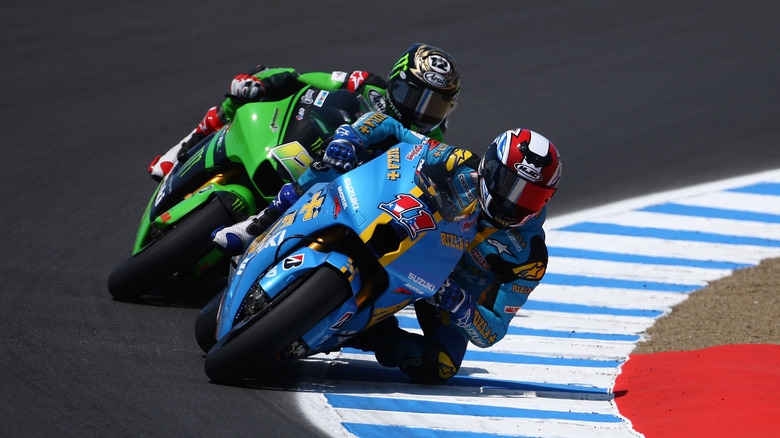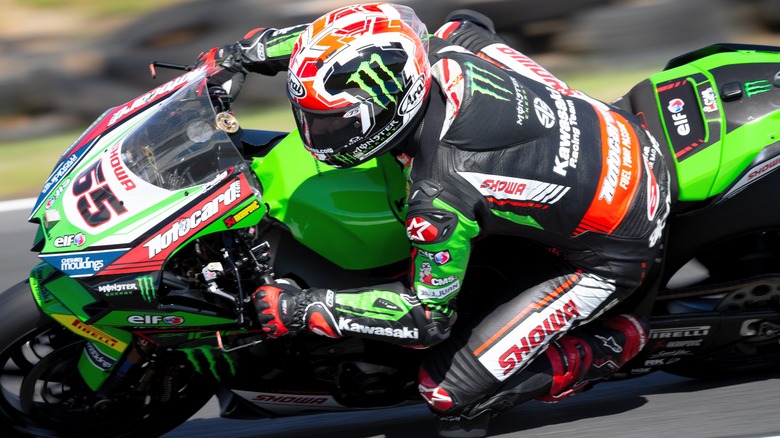The Reason Why Kawasaki Doesn't Race In MotoGP Anymore
MotoGP was established in its current form in 2002, but was hardly the beginning in terms of motorcycle racing that goes back to the early 20th century. In addition to entertainment, MotoGP has provided some of the coolest motorcycle decals and liveries we've ever seen. Kawasaki strutted onto the track in the 2002 inaugural MotoGP with the ZX-RR and seasoned rider Akira Yanagawa, and while neither the 2002 nor 2003 seasons would see a Kawasaki placing above ninth, one 2004 race saw the ZX-RR take third place, and in 2005 it finished second in an event.
Over the next four years there would be a series of shifting riders, and the team would even sign Marco Melandri (a MotoGP World Championship runner-up) for seasons 2009 and 2010. However, Kawasaki released a statement at the start of 2009 explaining they were leaving the MotoGP competition space as a result of the economic crisis of the time.
Dubbed "The Great Recession," a boom in the real estate market expanded beyond sustainability, and mortgages started going upside down (home values plummeted but the original high loan amounts remained). This turn of events not only disrupted the U.S., but also stressed financial markets around the world, negatively impacting businesses. According to The Race, at least €10 million ($11,040,025) is required to operate a MotoGP team, with some managers reporting upwards of €15 million ($16,560,038) for championship level finishes.
World Superbike vs MotoGP
While Kawasaki dropped out of MotoGP in 2009, it continues to have a presence in the FIM Superbike World Championship — recently reaching fourth in 2024's round seven. There are several differences between the Superbike World Championship and MotoGP, particularly with the bikes themselves. Superbike World Championship motorcycles feature racing add-ons, but are models that can actually be purchased by the public. MotoGP bikes, on the other hand, are very specialized, expensive, track-only models. So, you can sink less than $300,000 into a Superbike World Championship motorcycle, but a MotoGP bike can run into the millions.
One of the benefits for manufacturers to get involved in racing is the concept of "win on Sunday, sell on Monday." Racing events grab attention for certain bike models that get motorcycle enthusiasts amped to purchase one. The ZX-RR ran MotoGP events for years, but most riders find models like the 2024 Kawasaki Ninja ZX-4RR more appealing because you can actually buy one. Interviewed by 44teeth.com, the PR Manager of Kawasaki Europe, Martin Lambert, explained, "[The] effect [racing] has on sales wouldn't be immediate. It's a much more drawn out process. I don't know how other factories fund MotoGP projects and I don't know how much sponsors are putting in, but it's a serious amount of cash. And I also don't know how they get a return on that investment." Despite leaving the MotoGP series, this Japanese manufacturer is no stranger to blistering performance, as evident by these 5 examples of the fastest motorcycles Kawasaki ever built.

